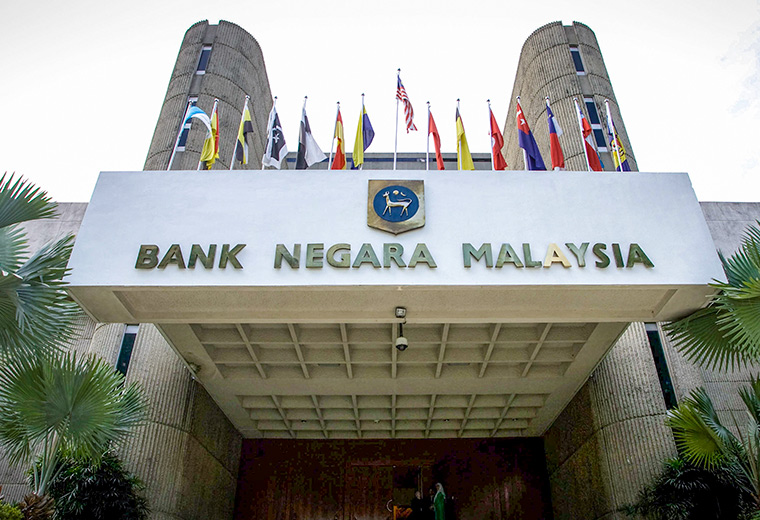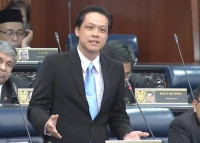ALTHOUGH a policy consensus has emerged since the Covid-19 outbreak on the need for more government spending to come out of these unprecedented times on a firmer footing, some are still jittery over what they perceive to be a dearth of viable sources of funding.
While it’s acknowledged, on the one hand, that the fiscal deficit needs to increase in order to accommodate greater direct injection by the government, on the other hand, there are still worries about the debt level, which breached the 60% self-imposed ceiling to 60.7% of gross domestic product – translating into RM874.27 billion – by end-September.
This is expected to go up to 61% in 2021, according to The Edge Markets. In the same vein, the country’s deficit is expected to be at least 6% as already anticipated, which, it has to be noted and stressed, is nothing out of the ordinary, historically speaking.
According to the Finance Ministry’s Fiscal Policy Review 2021, Malaysian government securities (MGS) and Malaysian government investment issues (MGIIs), or government bond issuance that is our national debt denominated in the ringgit, mainly made up 96.7% of the country’s borrowings.
And, it has to be highlighted that government borrowing constitutes only 26.5% of the source of Budget 2021 – with 40.9% coming from direct tax and the rest (19.4%) derived from non-tax revenue.
It’s hereby submitted that arguably, the real concern should be our debt-servicing ratio. In 2019, our interest payments alone accounted for about 13% of revenue, and the figure is set to rise together with a rising deficit – which represents a form of (deliberate) leakage.
According to the International Monetary Fund (IMF), Singapore has a much higher debt-to-GDP ratio than us, at a staggering 130%.
It has to be highlighted that Singapore government securities (SGS) and special SGS have never been issued for fiscal policy, but exclusively for monetary policy purposes and to develop and cater to the needs of the financial market in providing a risk-free (government-backed) benchmark (for risky assets) and investments.
Singapore’s sources of funding are mainly taxation (direct, and goods and services taxes), and since 2016, increasingly also by “net investment contribution returns” (NIRC). NIRC comprise investment proceeds made by the Monetary Authority of Singapore (MAS), or in effect, the central bank, together with sovereign wealth fund Temasek Holdings and the Government Investment Corporation (GIC).
Lastly, a drawdown of past reserves also plays a critical role, particularly amid the Covid-19 crisis.
The point, however, is that the level of national debt is not necessarily the chief indicator of the government’s ability to repay.
There have been calls for our government to emulate Indonesia in doing debt monetisation, which primarily means directly borrowing from the central bank by way of the Treasury issuing debt or public bonds to the central bank.
In the Malaysian context of Bank Negara, this would, however, represent a step too far, and out of bounds. It would also blur the distinction between the roles of fiscal and monetary policy, which would be unpalatable to Bank Negara’s technocratic sensibilities.
In addition to debt issuance and taxation, perhaps, the following policy proposals – which aren’t exhaustive – could be considered in the future, in view of the impact of Covid-19:
Tapping into an overdraft
This requires amending Section 71 of the Bank Negara Act (2009) to shift from the provision of temporary financing to a permanent overdraft facility – mimicking the UK’s Ways and Means (W&M) facility in relation to the Treasury’s account with the Bank of England – and limited to a specified level.
However, the overdraft extension shall be temporary, with no deadline for repayment. Repayment to Bank Negara (for national accounting purposes) could involve the issuance of perpetual, or 50-year, or even 100-year, bonds to institutional investors.
In terms of spending, 30% could be channelled to the Covid-19 Fund, to be used for our frontliners, personal protective equipment, vaccine procurement and distribution purposes, among others.
Borrowing from government-linked banks
Instead of going through the bond market, the government should be leveraging its (indirect) ownership of government-linked banks (Maybank, CIMB and RHB) by borrowing directly at favourable rates in this time, which could be used to fund development/capital expenditure (devex/capex).
At nearly 20%, which far exceeds the 8% minimum capital adequacy ratio of risk-weighted assets imposed by Basel 3, our banks’ liquidity buffer is more than enough.
At the same time, quantitative easing (QE) – purchase of government bonds in the secondary market – could be pursued by Bank Negara on a limited and temporary basis, targeted at keeping the government debt burden, in the form of interest rates, low.
It was reported by The Edge Markets (October 5, 2020) that Bank Negara’s holdings of MGS increased to RM10.9 billion as at end-August this year, which translates into merely 2.5% of the outstanding RM431.7 billion.
The current 10% policy limit for secondary purchases of MGS by Bank Negara should be increased drastically to 60% (reflecting the current self-imposed debt ceiling) on a one-off basis, and fully taken up with the purpose of flattening across the yield curve of the bond market, so as to result in lower coupon or interest rates as much as possible. It will then revert back to a lower figure of 30%.
The MGS deposited with Bank Negara – as the government’s de jure (legally appointed or statutory) banker – could also earn interest. Proceeds from the interest rate would be returned to the government, to be absorbed by the Consolidated Fund or Covid-19 Fund.
In 2012, it was reported that the UK Treasury received £35 billion from the Bank of England as it surrendered interest earned on QE assets (gilts or government bonds), bought in the secondary markets as offloaded by institutional investors. It has to be stressed that this was strictly on a temporary basis.
In conclusion, the government is well-positioned to pull out all the stops to ensure that we come out of the Covid-19 crisis on a sustained basis. – The Vibes, November 15, 2020
Jason Loh is head of social, law and human rights at Emir Research, an independent think-tank focused on strategic policy recommendations based on rigorous research





















